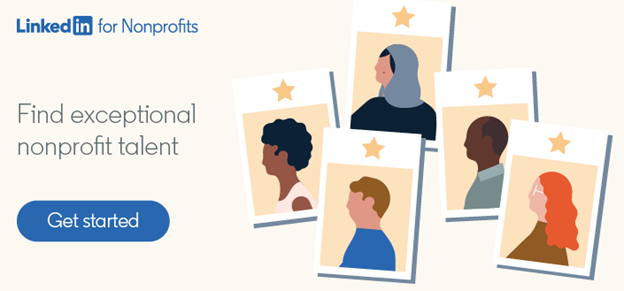
How to Build a More Inclusive Nonprofit Workplace
Diversity, equity, and inclusion (DEI) issues are on many leaders’ minds, but knowing what steps will have the most meaningful impact can be a challenge. Luckily, you don’t have to operate in a vacuum. Nonprofits can take cues from what other organizations are doing, both within the sector and in the for-profit world, to guide and strengthen their own efforts.
To support these knowledge-sharing efforts, LinkedIn’s virtual event Driving Change: How to create a more equitable and inclusive workplace brought together two experts in this space for an insightful discussion on DEI: Danny Guillory, vice president and chief diversity officer at Dropbox, and Melissa Thompson, SVP of talent acquisition at Nielsen. Here are three strategies that emerged from the discussion that nonprofits can use along their own DEI journeys.
1. Rethink your job descriptions and talent brand
Excessively long job descriptions with too many requirements can turn underrepresented talent away, making people feel like they miss the mark, even if they meet the majority of requirements. That’s why Nielsen is working to tighten its job descriptions, focusing on screening people in, rather than screening them out.
As Melissa points out, job ads used to fit in a small square in the newspaper, which forced organizations to really think about what their core requirements were. You don’t have to return to this old-fashioned method of spreading the word about open roles, but scrutinizing your job descriptions and removing requirements that are non-essential or can be trained later may help you attract a more diverse pool of candidates.
At the same time, Danny recommends reviewing your talent brand—the way you position your organization to candidates—and making sure that it aligns with the actions you’re taking. If you talk about DEI, you need to show what you’re doing to walk the walk, even if you’re still in the early stages of putting a strategy in place. Authenticity is critical. Without it, new hires may become disillusioned when they join your organization, causing them to leave.
2. Adjust your interview process
Looking at interviews as a way to screen out candidates can be counterproductive. At Dropbox, the team has started interviewing “in,” recognizing that no new hire is going to be completely perfect. Today, they consider what a person would need to be successful on the job, rather than what they lack. They also apply a modified version of the Rooney Rule, ensuring that interview slates contain at least one woman or candidate from an underrepresented group.
Nielsen, meanwhile, is taking steps like training hiring managers to help them adopt more inclusive interviewing practices, such as building diverse interview panels. The company also aims to help people coming in for interviews to see the diversity of the workforce.
3. Use stay interviews to avoid losing great talent
Inclusive hiring practices are important, but they need to be backed up by strong efforts to support and retain underrepresented talent—otherwise, they won’t make a big difference in the grand scheme of things. Dropbox has taken two key steps to retain its people, the first of which is using predictive analytics to spot people who are likely to leave. That might sound complicated, but it essentially comes down to looking at factors like time in role that are correlated with turnover.
After identifying these potential flight risks, the second step is to conduct a “stay interview” to find out what the company could do to make them stay. Out of the 200+ people that Dropbox conducted stay interviews with in 2020, only 4% ultimately decided to leave.
Everyone can play a role in supporting DEI efforts
Whether your nonprofit has a dedicated DEI team or not, these efforts can’t fall to just one person or team. Your whole organization needs to work together to welcome and support new hires, especially those from underrepresented groups. Look to foster mentorship opportunities, provide ongoing education, and ensure that every voice is heard. The result? More innovation, different perspectives, and a workplace where people from every background can thrive.
To learn how LinkedIn for Nonprofits can support your organization’s DEI efforts, get in touch with our team.
This post was inspired by the LinkedIn Talent Blog article “3 Strategies from Top Talent Leaders for Creating a More Equitable and Inclusive Workplace,” authored by Laura Hilgers.

